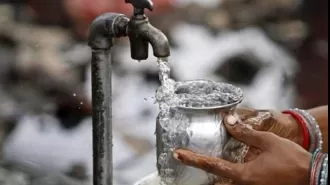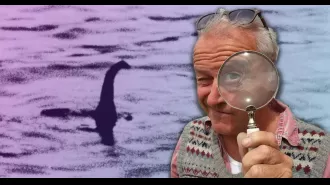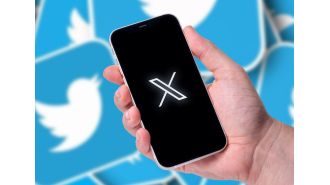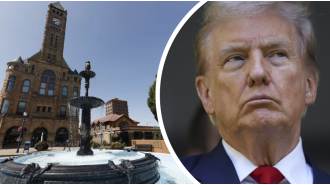NASA announces plan to rescue Boeing Starliner crew from space
NASA has held a review to decide if Boeing's Starliner is safe for the crew's return home.
August 24th 2024.
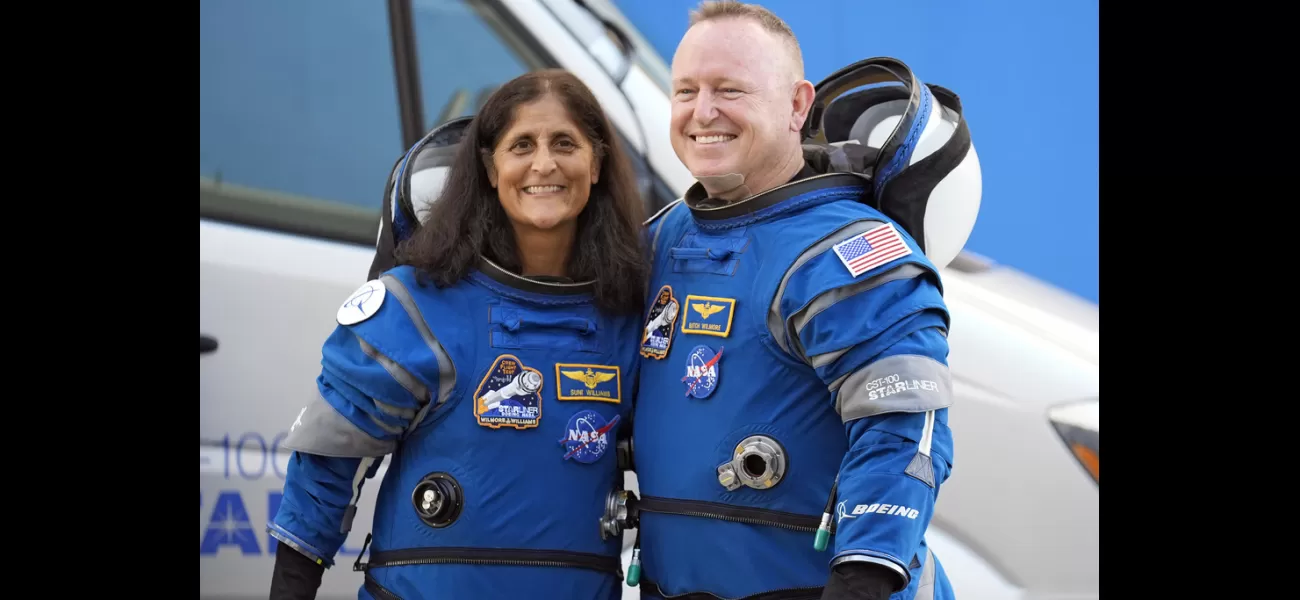
After spending approximately 80 days on board the International Space Station due to technical complications with the Boeing Starliner spacecraft, two NASA astronauts will finally be returning to Earth thanks to a SpaceX Crew Dragon capsule. This unexpected turn of events has come after a formal review conducted by NASA on Saturday, where they had to decide whether the Starliner was safe enough to bring the crew back or if the Crew Dragon would have to intervene.
The Starliner, which had transported astronauts Suni Williams and Butch Wilmore to the space station in June, encountered issues with helium leaks and thrusters that suddenly stopped working during its first crewed test flight. Despite weeks of efforts to resolve the problems and Boeing's assurance on August 2nd that they were confident in the spacecraft's ability to bring the astronauts back, NASA announced on August 7th that they were seriously considering utilizing the SpaceX Crew Dragon vehicle instead. This decision was made after taking into account their extensive experience in successful and unsuccessful space missions.
NASA administrator Bill Nelson explained that the decision was unanimous among representatives from different departments and research centers within the agency. He also acknowledged the importance of learning from past mistakes, citing the loss of two space shuttles due to a lack of transparency. He emphasized that spaceflight, even at its safest, is not without risk, and that test flights are inherently risky.
The Crew Dragon was originally scheduled for a routine mission to the International Space Station, carrying four astronauts. However, with the reconfiguration of the mission, there will now be two empty seats for Williams and Wilmore to occupy, and they will join the Crew-9 team as part of the ISS expedition. This means that their stay on the space station will be extended by an additional six months, as long as a regular mission.
In contrast, the Starliner will return to Earth without any crew on board. If the uncrewed return trip is successful, NASA will have to make a critical decision on whether to certify the Starliner for human spaceflight, despite its failure to complete its intended mission. Boeing, on the other hand, released a statement saying that their main priority is the safety of the crew and spacecraft, and that they are following NASA's instructions to ensure a safe and successful return.
During the news conference on Saturday, NASA's Commercial Crew Program manager, Steve Stich, mentioned a slight disagreement in evaluating the level of risk between NASA and Boeing. He also explained that they were able to replicate the thruster problems during ground tests and that they may have been caused by heat build-up. Additionally, he mentioned that the helium leaks could be due to degraded seals exposed to propellant vapor, as stated by Mark Nappi, Boeing's Commercial Crew Program manager.
Despite the initial uncertainty surrounding the risks and concerns, NASA is confident in SpaceX's ability to bring the astronauts back safely. Gwynne Shotwell, SpaceX's chief operating officer, expressed their readiness to support NASA in any way possible. She also addressed the thruster issues and explained that five of the 28 thrusters had stopped working and have since been recovered.
The astronauts, who were expecting to spend only eight days in space, have already been on the space station for over two months. With their return now scheduled for February 2025 at the earliest, they will have to wait a little longer to be reunited with their loved ones. However, both NASA and SpaceX are determined to ensure a successful mission and have faith that Boeing will address the issues and eventually send the Starliner on a crewed mission in the future.
After spending approximately 80 days on board the International Space Station, two NASA astronauts are finally coming back to Earth. A SpaceX Crew Dragon capsule will be their ride home, following a series of issues with the Boeing Starliner spacecraft. This turn of events has come as a surprise to many, given Boeing's reputation as a leading aerospace giant.
The decision to use the Crew Dragon spacecraft was made after a formal review held by NASA on Saturday. The agency had to determine whether the Starliner vehicle was safe enough to bring the astronauts home, or if they would have to rely on SpaceX's spacecraft instead. The Starliner, which initially carried astronauts Suni Williams and Butch Wilmore to the space station in June, faced challenges such as helium leaks and thruster malfunctions during its first crewed test flight.
Despite weeks of efforts by engineers to address the issues, Boeing expressed confidence that the spacecraft would be able to bring the astronauts back to Earth. However, during a news briefing on August 7, NASA revealed that discussions within the agency had evolved, leading them to consider using the Crew Dragon vehicle instead. This was a significant decision, given that the spacecraft has successfully completed about a dozen crewed missions since 2020.
NASA Administrator Bill Nelson stated that the agency took into account its extensive experience with both successful and unsuccessful spaceflights when making the decision. A unanimous poll among NASA representatives from various departments and research centers also played a crucial role in the decision-making process. Nelson acknowledged the risks involved in spaceflight, especially during test missions, but emphasized the importance of a culture that allows for open communication and sharing of information.
The Crew Dragon spacecraft was already scheduled to make a routine trip to the International Space Station with four astronauts. However, the mission, known as Crew-9, will now be modified to accommodate the two additional astronauts returning home. This means that Williams and Wilmore will join the Crew-9 team and become part of the official ISS expedition. As a result, their stay on the space station will be extended by six months, the duration of a typical mission.
This reassignment to Crew-9 also means that Williams and Wilmore's return will be pushed to February 2025 at the earliest. As for the Starliner, it will have to make an empty trip back to Earth. If this uncrewed return goes smoothly, NASA will have to make a critical decision on whether to officially certify the Starliner for human spaceflight. This would allow the spacecraft to make routine trips to orbit, despite not completing its intended mission.
Boeing was not present at the news conference on Saturday, but the company released a statement emphasizing their commitment to the safety of the crew and spacecraft. NASA's Commercial Crew Program manager, Steve Stich, mentioned a slight disagreement in evaluating the level of risk, but expressed confidence in Boeing's ability to address the issues and prepare the Starliner for future missions.
SpaceX's chief operating officer, Gwynne Shotwell, also responded to the news on social media, stating that the company is ready to support NASA in any way possible. The Starliner's issues mainly revolve around five of its 28 "reaction control thrusters" failing during the test mission. While most of them were eventually recovered, the astronauts' return had to be extended to allow engineers to investigate the problem.
After conducting tests on the ground, it was discovered that heat build-up within the thrusters may be causing issues with the flow of propellant. Additionally, there were concerns about helium leaks, possibly due to degraded seals exposed to propellant vapor. These issues initially caused ambiguity among NASA officials regarding the level of risk involved. Hence, the decision to turn to SpaceX and the Crew Dragon spacecraft for the astronauts' return.
The Starliner, which had transported astronauts Suni Williams and Butch Wilmore to the space station in June, encountered issues with helium leaks and thrusters that suddenly stopped working during its first crewed test flight. Despite weeks of efforts to resolve the problems and Boeing's assurance on August 2nd that they were confident in the spacecraft's ability to bring the astronauts back, NASA announced on August 7th that they were seriously considering utilizing the SpaceX Crew Dragon vehicle instead. This decision was made after taking into account their extensive experience in successful and unsuccessful space missions.
NASA administrator Bill Nelson explained that the decision was unanimous among representatives from different departments and research centers within the agency. He also acknowledged the importance of learning from past mistakes, citing the loss of two space shuttles due to a lack of transparency. He emphasized that spaceflight, even at its safest, is not without risk, and that test flights are inherently risky.
The Crew Dragon was originally scheduled for a routine mission to the International Space Station, carrying four astronauts. However, with the reconfiguration of the mission, there will now be two empty seats for Williams and Wilmore to occupy, and they will join the Crew-9 team as part of the ISS expedition. This means that their stay on the space station will be extended by an additional six months, as long as a regular mission.
In contrast, the Starliner will return to Earth without any crew on board. If the uncrewed return trip is successful, NASA will have to make a critical decision on whether to certify the Starliner for human spaceflight, despite its failure to complete its intended mission. Boeing, on the other hand, released a statement saying that their main priority is the safety of the crew and spacecraft, and that they are following NASA's instructions to ensure a safe and successful return.
During the news conference on Saturday, NASA's Commercial Crew Program manager, Steve Stich, mentioned a slight disagreement in evaluating the level of risk between NASA and Boeing. He also explained that they were able to replicate the thruster problems during ground tests and that they may have been caused by heat build-up. Additionally, he mentioned that the helium leaks could be due to degraded seals exposed to propellant vapor, as stated by Mark Nappi, Boeing's Commercial Crew Program manager.
Despite the initial uncertainty surrounding the risks and concerns, NASA is confident in SpaceX's ability to bring the astronauts back safely. Gwynne Shotwell, SpaceX's chief operating officer, expressed their readiness to support NASA in any way possible. She also addressed the thruster issues and explained that five of the 28 thrusters had stopped working and have since been recovered.
The astronauts, who were expecting to spend only eight days in space, have already been on the space station for over two months. With their return now scheduled for February 2025 at the earliest, they will have to wait a little longer to be reunited with their loved ones. However, both NASA and SpaceX are determined to ensure a successful mission and have faith that Boeing will address the issues and eventually send the Starliner on a crewed mission in the future.
After spending approximately 80 days on board the International Space Station, two NASA astronauts are finally coming back to Earth. A SpaceX Crew Dragon capsule will be their ride home, following a series of issues with the Boeing Starliner spacecraft. This turn of events has come as a surprise to many, given Boeing's reputation as a leading aerospace giant.
The decision to use the Crew Dragon spacecraft was made after a formal review held by NASA on Saturday. The agency had to determine whether the Starliner vehicle was safe enough to bring the astronauts home, or if they would have to rely on SpaceX's spacecraft instead. The Starliner, which initially carried astronauts Suni Williams and Butch Wilmore to the space station in June, faced challenges such as helium leaks and thruster malfunctions during its first crewed test flight.
Despite weeks of efforts by engineers to address the issues, Boeing expressed confidence that the spacecraft would be able to bring the astronauts back to Earth. However, during a news briefing on August 7, NASA revealed that discussions within the agency had evolved, leading them to consider using the Crew Dragon vehicle instead. This was a significant decision, given that the spacecraft has successfully completed about a dozen crewed missions since 2020.
NASA Administrator Bill Nelson stated that the agency took into account its extensive experience with both successful and unsuccessful spaceflights when making the decision. A unanimous poll among NASA representatives from various departments and research centers also played a crucial role in the decision-making process. Nelson acknowledged the risks involved in spaceflight, especially during test missions, but emphasized the importance of a culture that allows for open communication and sharing of information.
The Crew Dragon spacecraft was already scheduled to make a routine trip to the International Space Station with four astronauts. However, the mission, known as Crew-9, will now be modified to accommodate the two additional astronauts returning home. This means that Williams and Wilmore will join the Crew-9 team and become part of the official ISS expedition. As a result, their stay on the space station will be extended by six months, the duration of a typical mission.
This reassignment to Crew-9 also means that Williams and Wilmore's return will be pushed to February 2025 at the earliest. As for the Starliner, it will have to make an empty trip back to Earth. If this uncrewed return goes smoothly, NASA will have to make a critical decision on whether to officially certify the Starliner for human spaceflight. This would allow the spacecraft to make routine trips to orbit, despite not completing its intended mission.
Boeing was not present at the news conference on Saturday, but the company released a statement emphasizing their commitment to the safety of the crew and spacecraft. NASA's Commercial Crew Program manager, Steve Stich, mentioned a slight disagreement in evaluating the level of risk, but expressed confidence in Boeing's ability to address the issues and prepare the Starliner for future missions.
SpaceX's chief operating officer, Gwynne Shotwell, also responded to the news on social media, stating that the company is ready to support NASA in any way possible. The Starliner's issues mainly revolve around five of its 28 "reaction control thrusters" failing during the test mission. While most of them were eventually recovered, the astronauts' return had to be extended to allow engineers to investigate the problem.
After conducting tests on the ground, it was discovered that heat build-up within the thrusters may be causing issues with the flow of propellant. Additionally, there were concerns about helium leaks, possibly due to degraded seals exposed to propellant vapor. These issues initially caused ambiguity among NASA officials regarding the level of risk involved. Hence, the decision to turn to SpaceX and the Crew Dragon spacecraft for the astronauts' return.
[This article has been trending online recently and has been generated with AI. Your feed is customized.]
[Generative AI is experimental.]
0
0
Submit Comment

